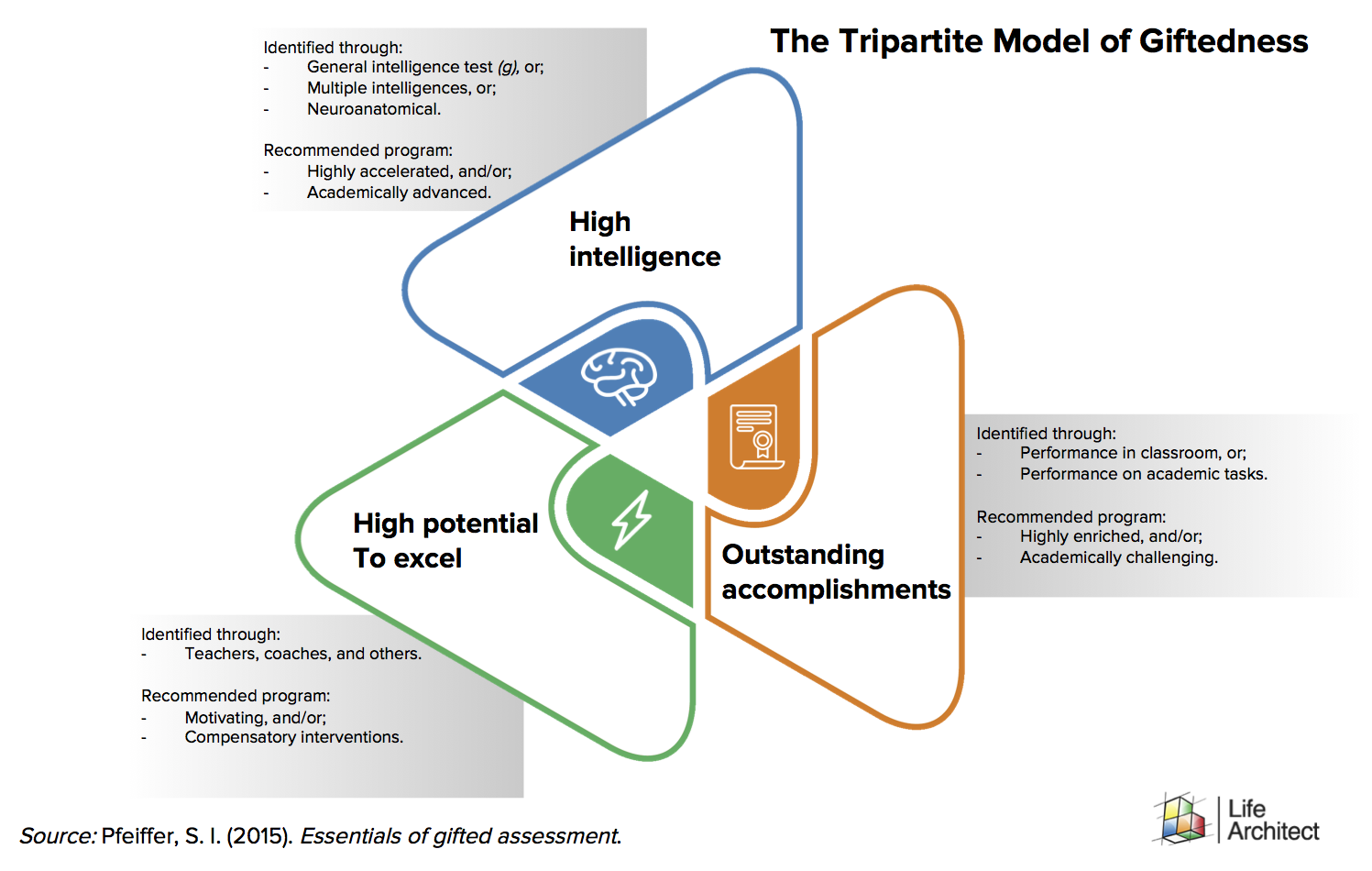Here is the visualisation of giftedness that I use in my seminars.
Download Pfeiffer’s tripartite model of giftedness (PDF – printable)
Pfeiffer’s tripartite (pronounced try-par-tight) model of giftedness is a new and practical view for coaches, educators, and other practitioners to implement. Gifted researcher Professor Steven Pfeiffer created the model to provide a more inclusive answer to whether a student was gifted or not gifted (Pfeiffer, 2013). Pfeiffer’s experience as both a clinical psychologist and in the development of elite youth athletes makes his philosophy a remarkable fit when applied to coaching gifted children across a variety of domains and backgrounds.
The model allows a nuanced and inclusive view of giftedness. The model provides three “distinct but complimentary lenses” (Pfeiffer, 2015, p. 8) for looking at giftedness. These three lenses are:
1. High intelligence, or;
2. Outstanding accomplishments, or;
3. High potential to excel.
In the tripartite model, each lens is an independent definition of giftedness, and unlike Renzulli’s (1986) Three ring conception of giftedness, an individual only has to fit into a single category (i.e. “OR” rather than “AND”). These can be demonstrated in a new visualisation of Pfeiffer’s concept.
While the high intelligence lens provides appropriately quantified metrics (including IQ), the other two lenses become a little more subjective. Outstanding accomplishments allows performance on academic tasks to be defined in a very local context (which may be misleading in small samples). And high potential to excel is certainly a qualitative and subjective assessment, allowing this definition to include children who would fall below standard thresholds for cognitive giftedness.
Here are the specific tools I recommend for each lens. Please note that I do not offer these identification services, though I integrate related assessments into coaching programs for gifted families.
High intelligence
All tests administered by a registered psychologist.
- Stanford-Binet Intelligence Scales (SB5 or SB6 when released), or;
- Wechsler Intelligence Scale for Children (WISC-V), or;
- Wechsler Preschool & Primary Scale of Intelligence (WPPSI-IV).
Outstanding accomplishments
- Dr Linda Silverman’s Characteristics of Giftedness Scale.
- Lesley Sword’s Overexcitabilities Checklist.
- Gifted Evaluation Scale-Third Edition (GES-3).
- Interview with parents (anamnesis).
High potential to excel
- Interview with parents (anamnesis).
- Interview with teachers and instructors.
- Interaction with the child.
The tripartite model is at once both comprehensive and simple. Where other models may continually add complexity, or are more focused on cognitive achievement, the tripartite model distils this down to the identification of giftedness across domains, and the appropriate programs applicable to the individual’s unique presentation of giftedness. While this article is focused on its use in private coaching for gifted families, it is also directly applicable to the education of gifted students in schools.
Supporting gifted children as they move from high ability to high performance necessitates a deeper understanding of identification and practical solutions, and requires the ongoing connection between gifted assessment and the variety of enrichment programs available in coaching and other educational environments.
More than a century after the creation of the IQ test, the tripartite model offers a more nuanced approach to identifying and supporting giftedness for coaches, educators, and other practitioners. Adopted across any of these related fields, its extended use would see the inclusion of and provision for the intellectual, social, and emotional needs of gifted individuals who have previously “fallen through the gaps”.



